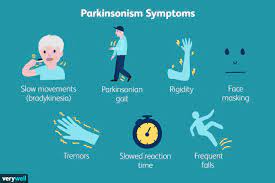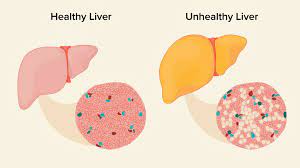A team of researchers from the University of California, Irvine (UCI) has made a groundbreaking discovery that could revolutionize the treatment of Parkinson’s disease. The scientists have identified a brain molecule called ophthalmic acid that can reverse movement deficits in Parkinson’s patients, offering a new therapeutic target for this debilitating neurodegenerative disorder.
Published in the October issue of Brain, the study reveals that ophthalmic acid acts as a neurotransmitter, similar to dopamine, which is traditionally associated with motor control. The molecule binds to calcium-sensing receptors (CaSR) in the brain, significantly improving movement impairments in mouse models of Parkinson’s for over 20 hours. This discovery presents a promising alternative to current treatments, which rely heavily on dopamine replacement.
Parkinson’s Disease and Current Treatment Challenges
Parkinson’s disease affects millions of individuals worldwide, particularly those over the age of 50. The disease is characterized by symptoms such as tremors, muscle rigidity, and impaired movement, which are primarily caused by the loss of dopamine-producing neurons in the brain. The leading treatment, L-dopa, works by temporarily replenishing dopamine levels, but its effects last only two to three hours. Over time, patients develop a tolerance to the drug, and its long-term use can lead to dyskinesia, causing involuntary, erratic movements.
According to Professor Amal Alachkar, a co-corresponding author and professor in UCI’s School of Pharmacy & Pharmaceutical Sciences, “Our findings present a groundbreaking discovery that possibly opens a new door in neuroscience by challenging the more-than-60-year-old view that dopamine is the exclusive neurotransmitter in motor function control.”
Alachkar highlighted that ophthalmic acid not only restored movement in the Parkinson’s mouse models but also sustained these positive effects far longer than L-dopa, suggesting a potentially more effective treatment approach for movement disorders.
Ophthalmic Acid: A New Therapeutic Pathway
Alachkar’s research into motor function beyond dopamine began over two decades ago. In this recent study, her team conducted detailed metabolic examinations of hundreds of brain molecules to identify alternatives to dopamine that could influence motor activity. Their comprehensive analyses led to the discovery of ophthalmic acid as a viable alternative neurotransmitter.
“One of the critical hurdles in Parkinson’s treatment is the inability of neurotransmitters to cross the blood-brain barrier, which is why L-DOPA is administered to patients to be converted to dopamine in the brain,” Alachkar explained. “We are now developing products that either release ophthalmic acid in the brain or enhance the brain’s ability to synthesize it, as we continue to explore the full neurological function of this molecule.”
The research team’s findings have opened a new chapter in the understanding of motor function control, which could have far-reaching implications for the treatment of Parkinson’s and other movement disorders.
Promising Future for Parkinson’s Treatment
The study, titled Ophthalmate is a new regulator of motor functions via CaSR: implications for movement disorders, was conducted by a multidisciplinary team from UCI’s School of Pharmacy & Pharmaceutical Sciences and the School of Medicine. In addition to Alachkar, the research was co-authored by Olivier Civelli, the Eric L. and Lila D. Nelson Chair in Neuropharmacology, and other experts in the fields of physiology, biophysics, and neuropharmacology.
The research was supported by the National Institute of Neurological Disorders and Stroke and the Eric L. and Lila D. Nelson Chair in Neuropharmacology. The discovery also led to a provisional patent for products related to ophthalmic acid and calcium-sensing receptors in motor function.
As researchers continue to investigate the full potential of ophthalmic acid, this breakthrough offers hope for millions of individuals suffering from Parkinson’s and similar neurodegenerative diseases.
Reference:
“Ophthalmate is a new regulator of motor functions via CaSR: implications for movement disorders” by Sammy Alhassen, Derk Hogenkamp, Hung Anh Nguyen, Saeed Al Masri, Geoffrey W. Abbott, Olivier Civelli, and Amal Alachkar, published in Brain, October 2024. DOI: 10.1093/brain/awae097.












